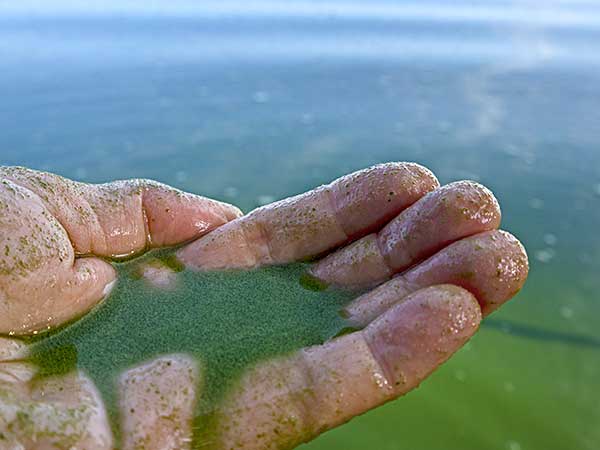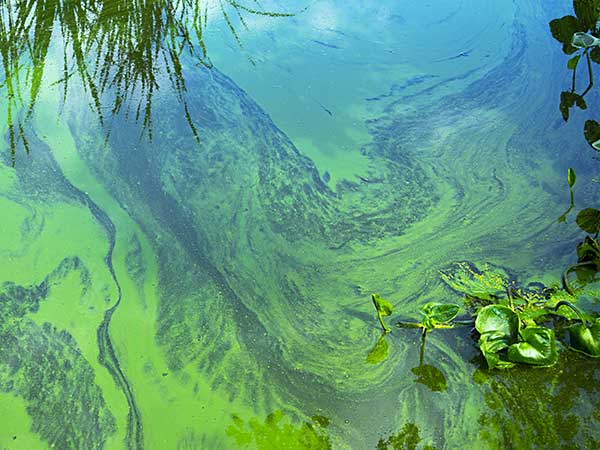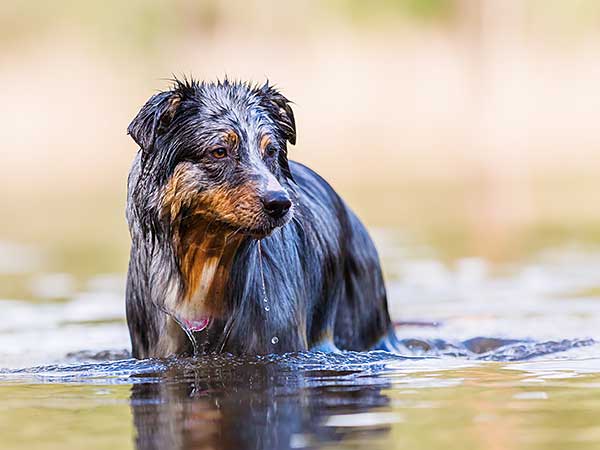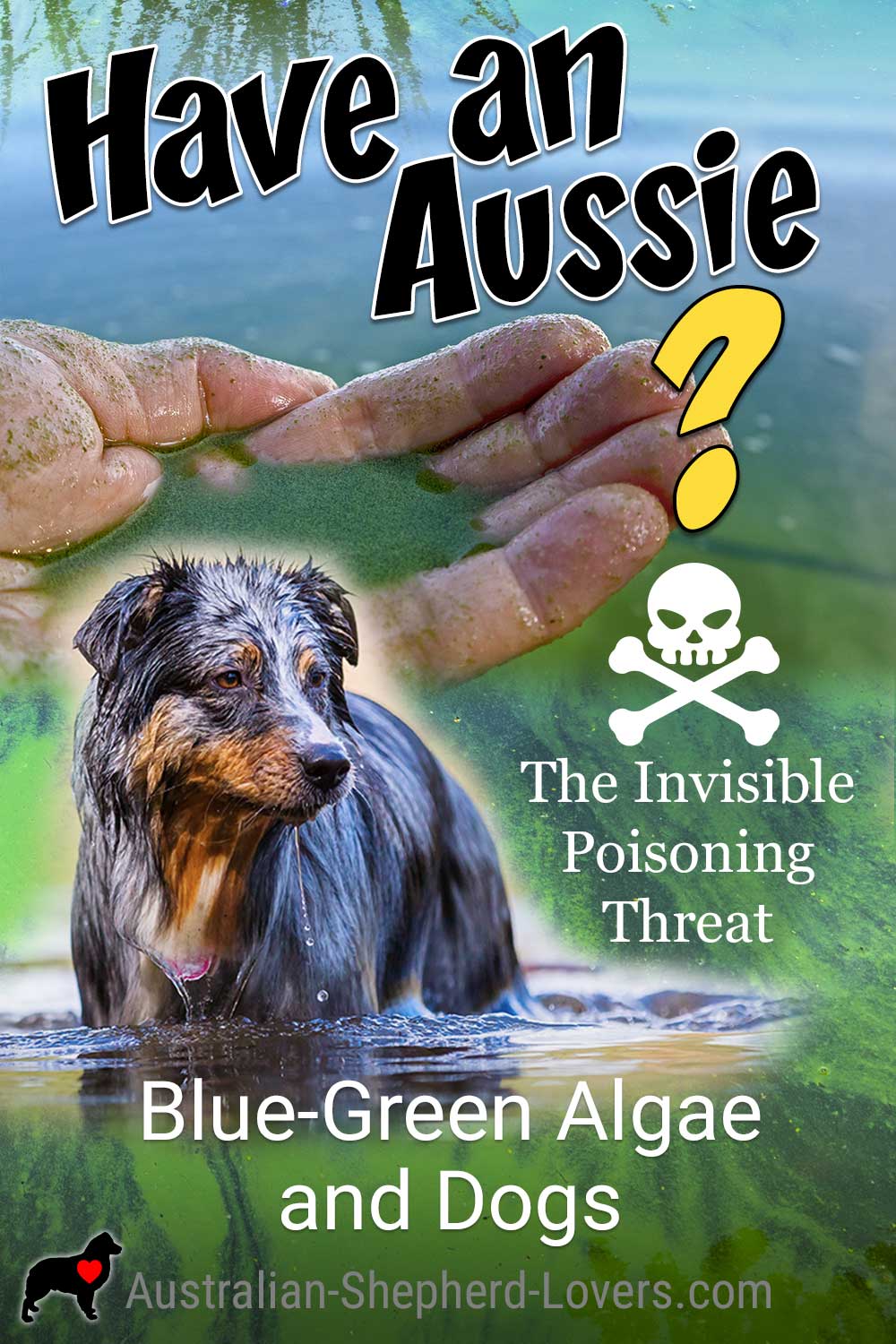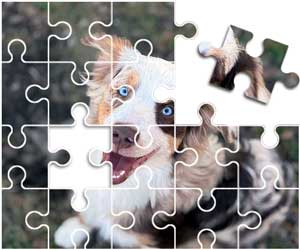
Blue-Green Algae and Dogs: The Invisible Poisoning Threat
B lue-green algae and dogs can be a dangerous combination, one that has only recently gained recognition when several owners tragically lost their dogs after exposure to this devastating threat. As people head outside to take advantage of the warm weather, it's only natural for them and their dogs to enjoy swimming and playing in ponds and lakes, but sadly that otherwise innocent activity can often turn deadly for dogs.
What Is Blue-Green Algae and Why Is It Dangerous to Dogs?
So what is blue-green algae and why is it such a threat? The name is a bit deceiving, as this isn't really an "algae" but rather a form of photosynthetic bacteria, called cyanobacteria. Some species of cyanobacteria aren't visible to the naked eye but when large clumps of it come together, they can form a blue-green sheen on the surface of water that resembles an algae bloom. Cyanobacteria are found in brackish fresh water such as lakes and ponds and can also be found in stagnant water in bird baths, flower pots, or backyard ponds.
This particularly toxic blue-green algae is common across North America and occurs most often during warm weather. Since dogs are more likely to play in and around water, they are especially vulnerable to the effects of blue-green algae poisoning, which can occur very quickly. It's this sudden and extreme result that has left many people wanting to know what kind of treatment blue-green algae may require.
As dog owners realize, it can be difficult to keep your dog out of the water as most breeds love to swim and play. For Australian Shepherd owners it's a particular challenge as Aussie's are extremely athletic and hard-working and have an instinctive desire to take a swim in order to cool off when they get overheated. Unfortunately, the mix of blue-green algae and dogs can be a lethal one and it is nearly impossible to detect until it's already too late.
Any time a dog enters a body of water that contains cyanobacteria, he is automatically in danger of developing blue-green algae poisoning. That's because dogs drink a substantial amount of water while swimming and may even be affected when they lick their fur or paws. For this reason, asking what is blue-green algae isn't enough, you also need to understand how it can affect your dog and what signs to look for if you suspect he's been exposed.
What Are the Symptoms of Blue-Green Algae Toxicity?
Blue-green algae contains two distinct types of toxins: microcystins and anatoxins, both of which can have a specific and devastating effect on a dog's body. Microcystins affect the liver, resulting in:
- weakness
- lethargy
- lack of appetite
- vomiting
- diarrhea
- bleeding
- pale gums
- jaundice
In severe cases, blue-green algae poisoning can lead to:
- seizures
- shock
- collapse
Anatoxins affect the nervous system, with even more serious symptoms that can include:
- weakness
- excessive saliva
- excessive tears
- difficulty breathing
- blue discoloration of the skin and mucous membranes
- tremors
- seizures
- rigid muscles
- paralysis
- disorientation
Both types of toxins can ultimately lead to coma and death if treatment isn't received right away, which is why blue-green algae and dogs is such a dangerous combination.
What Is the Treatment for Blue-Green Algae Poisoning?
Prompt treatment is critical for any kind of poisoning but it is particularly important when it comes to blue-green algae since it attacks so fast. Often, by the time an owner realizes there is a problem it is already too late and there is little that can be done. That's why you need to be particularly vigilant and pay attention to the condition of any water your dog enters and any signs that his health has been affected.
The treatment blue-green algae poisoning responds to is unfortunately quite limited, but if you can get your dog to the vet fast enough, there may be some things he/she can do. The primary response is to try and rid the body of the toxin, either by inducing vomiting or pumping the stomach. In some cases, your vet may give the dog activated charcoal to help absorb the toxin.
Unfortunately, there is no specific antidote for blue-green algae poisoning. Instead, treatment focuses on the affected organs. Aggressive therapy with intravenous fluids and plasma may help to stabilize the liver or nervous system and prevent shock. Muscle-relaxers and anti-seizure medications can help to prevent tremors or rigidness while other drugs can reduce excess saliva and tears or support failing liver function.
Because the combination of blue-green algae and dogs is so dangerous, the prognosis for this type of poisoning is not good. Getting to the vet as quickly as possible is your best chance but often even that is not enough. If you suspect that your dog was exposed to blue-green algae, seek medical attention immediately.
Prevention Is the Best Approach When It Comes to Dogs and Blue-Green Algae
The best thing you can do for your pet is to be careful about the water you let him play in and around. While blue-green algae may not be detectable to us, it does have an overpowering smell that may actually be attractive to dogs, which only adds to the potential for danger. Avoid any water that is discolored and be sure to keep backyard ponds and fountains clean. Also, make sure to empty flower pots, birdbaths or any other container where water may accumulate.
Remember, this particular threat is about more than just blue-green algae and dogs; it can affect humans too, causing contact dermatitis, so you should be cautious when handling dogs that have been swimming in affected water.
There's nothing like enjoying the fun of summer with your active Aussie, but you need to be aware of the possible danger. An ounce of prevention can help to spare you and your dog from a lot of anguish and heartbreak.
For more information about Australian Shepherd health issues see the Australian Shepherd Health & Genetics Institute (ASHGI).
Have Dog Training Questions?
Check out these introductory dog training videos...
I want my dog to stop being aggressive.
I want some help training my new puppy.
I want my dog to stop barking at everything.
Get Australian Shepherd Info, Website Updates, Special Offers, and Cartoons...
FREE GIFT
You'll also receive a free copy of the ebook
My Everyday Dog Training Tools
by professional dog trainer Daniel Abdelnoor, "Doggy Dan"



